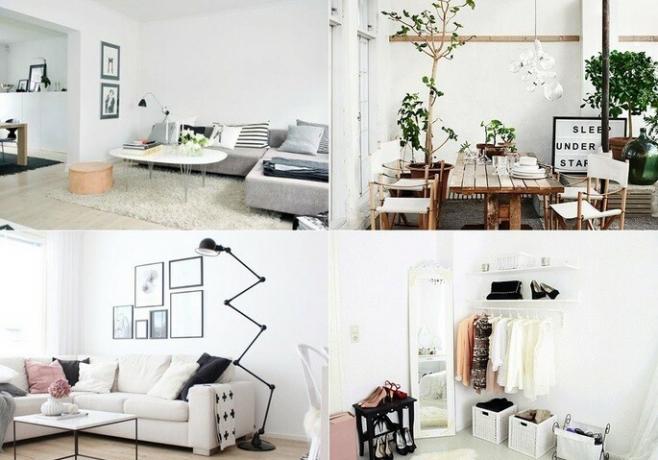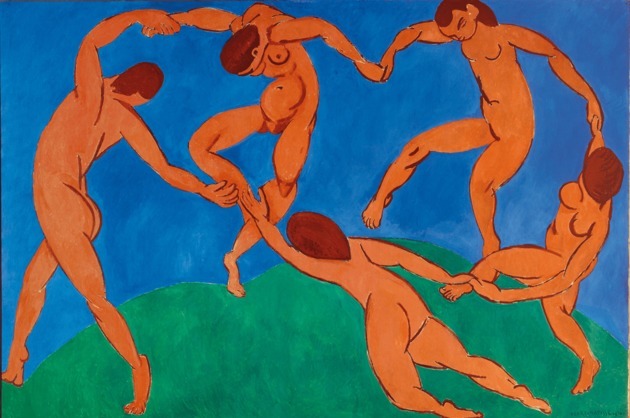(EF69AR06) Develop creative processes in visual arts, based on themes or artistic interests, in a way individual, collective and collaborative, making use of conventional, alternative materials, instruments and resources and digital.
(EF69AR07) Dialogue with conceptual principles, thematic propositions, imagery repertoires and creative processes in their visual productions.
(EF69AR02) Research and analyze different visual styles, contextualizing them in time and space.
Display different works in which the theme is the self-portrait. Show how this feature was used throughout the history of art and continues to be used today.
Talk to students about the importance of self-portraits in the history of art and show works from different places and periods. Briefly talk about the life of each artist shown and what their motivations would have been for producing the works.
Examples of artists that can be worked on:
Frida Kahlo, Vincent van Gogh, Francesca Woodman, Cindy Sherman, Salvador Dalí, Ana Mendieta.
To ask:
- How can I, through my image or my own representation, connect with the collective?
- What would I like to communicate?
Propose students to take self-portraits by observing their images in mirrors or cell phone cameras.
In a second moment, propose to the students that they elaborate creative self-portraits with the cell phone camera.
Show that the "selfie" can be done in countless ways and stimulate reflection on these possibilities, bringing the reflections to the contemporary context.
Ask them to prepare a document telling how the creative process was and what their motivations and sources of inspiration were.
The assessment will take place through the observation of the student's artistic process, who will deliver a text describing their creative experience, motivations and inspirations.
The final product (self-portraits itself) will also serve as an element of the evaluation, but they should have less weight.
(EF69AR33) Analyze historical, social and political aspects of artistic production.
(EF69AR34) Analyze and value the cultural heritage, material and immaterial, of different cultures, especially the Brazilian one, including their matrices indigenous, African and European, from different eras, and favoring the construction of vocabulary and repertoire related to different languages artistic.
Present content in the power point about the Week of Modern Art, explaining in a simple way what were the motivations of the artists for the event (inspired by the European avant-gardes) and how they produced works showing characteristics nationals.
Introduce the artists who participated in the Week, highlighting the visual arts: Anita Malfatti, Di Cavalcanti, Victor Brecheret, Vicente do Rego Monteiro.
Encourage students to perceive the characteristics present in the works of each artist.
Ask them to choose one of these names and carry out an artistic production inspired by their works.
(EF69AR31) Relate artistic practices to the different dimensions of social, cultural, political, historical, economic, aesthetic and ethical life
To open the debate, present a power point document with the performance “What is art? What is it for?” made by Paulo Bruscky in 1963. Also show the poem “Translate” by Ferreira Gullar, which brings the question lyrically.
Talk to students, encouraging them to think about what can or cannot be considered art.
Some possible questions can be asked:
- What do you believe "fits" in art?
- Is there a “regulatory body” that defines what art is?
- Who can be considered an artist?
- Can crafts be seen as art?
- Is it necessary to study art or take art courses to be an artist?
- Do students know any artists?
- Is there a "better" or "superior" type of art than another?
- What "does not fit" in art?
Then organize a forum (which can be in person or virtual) where students can continue their reflections. Separate groups of 5 or 6 students. It is important that each group has a mediator, who will write down the considerations and conclusions.
(EF69AR05) Experiment and analyze different forms of artistic expression (drawing, painting, collage, comics, folding, sculpture, modeling, installation, video, photography, performance etc.).
(EF69AR31) Relate artistic practices to the different dimensions of social, cultural, political, historical, economic, aesthetic and ethical life.
(EF69AR35) Identify and manipulate different technologies and digital resources to access, enjoy, produce, record and share artistic practices and repertoires, in a reflective, ethical and responsible.
Start the plan by talking about photographic language and how it can convey feelings and raise reflections on the ways in which societies are organized.
Talk about photojournalism and copyright work by photographers committed to social complaints.
Suggestion: Sebastião Salgado and Claudia Andujar.
Stimulate the perception of elements of photographic language such as: framing, symmetry, color, texture and, above all, the subject being dealt with.
Select, present and debate some articles of the Universal Declaration of Human Rights, elaborated by the UN in 1948.
Relate previously submitted photographs with human rights.
Propose students to choose one of the 30 articles in the declaration and, inspired by it, create a photograph (using cellphone cameras), seeking to communicate and convey a message.
Ask them to write about the process.
(EF69AR31) Relate artistic practices to the different dimensions of social, cultural, political, historical, economic, aesthetic and ethical life.
(EF69AR32) Analyze and explore, in thematic projects, the procedural relationships between different artistic languages.
(EF69AR34) Analyze and value the cultural heritage, material and immaterial, of different cultures, especially the Brazilian one, including their matrices indigenous, African and European, from different eras, and favoring the construction of vocabulary and repertoire related to different languages artistic.
Start the plan by talking about the indigenous issue in Brazil. Talk about indigenous culture and art.
Display data and elements that point to the invisibility of native peoples, as well as the oppression they suffer. Stimulate critical thinking and promote debate on the subject.
In a second moment, present the song Txai, by Milton Nascimento and talk about possible meanings. Write the lyrics of the song on the blackboard.
Ask students what they think the word Txai (originating from the Kaxinawá peoples) means. Ask them to write.
Afterwards, explain the meaning of the word:
Literally TXAI means “more than a friend/more than a brother, the half of me that exists in you/ and the half of you that inhabits me.”.
Propose that students choose an excerpt from the song to illustrate. Drawing and painting or collage techniques can be used.



